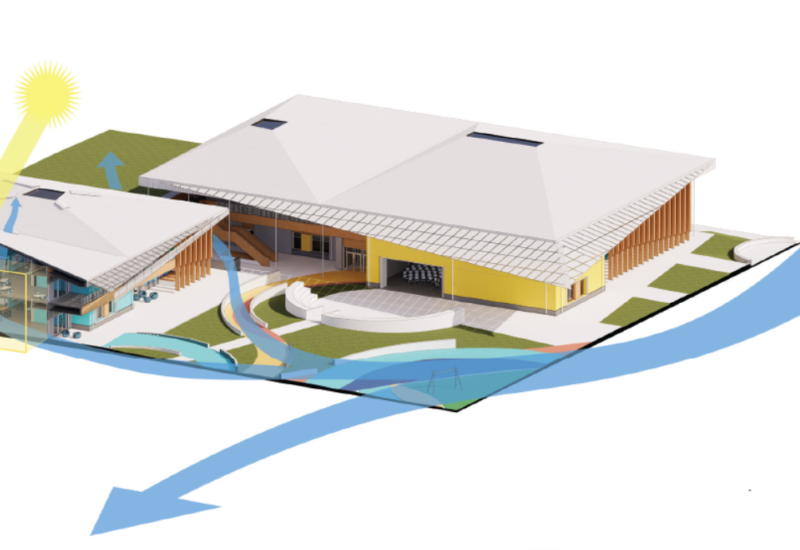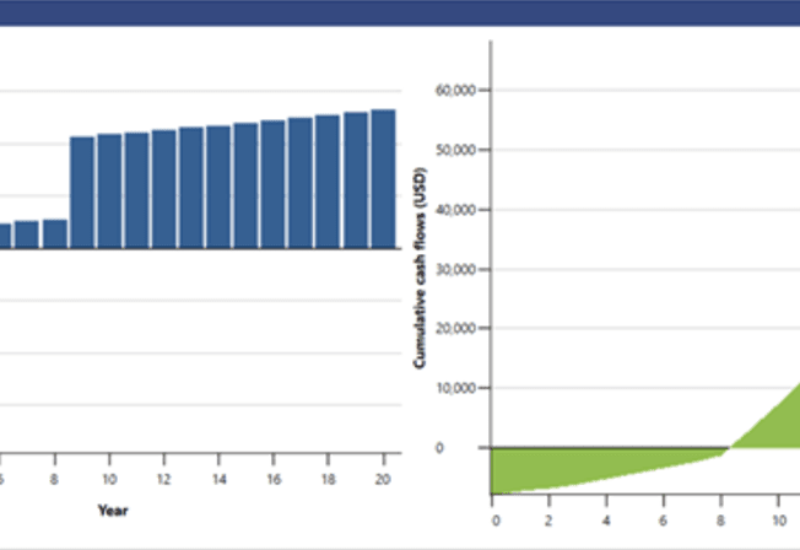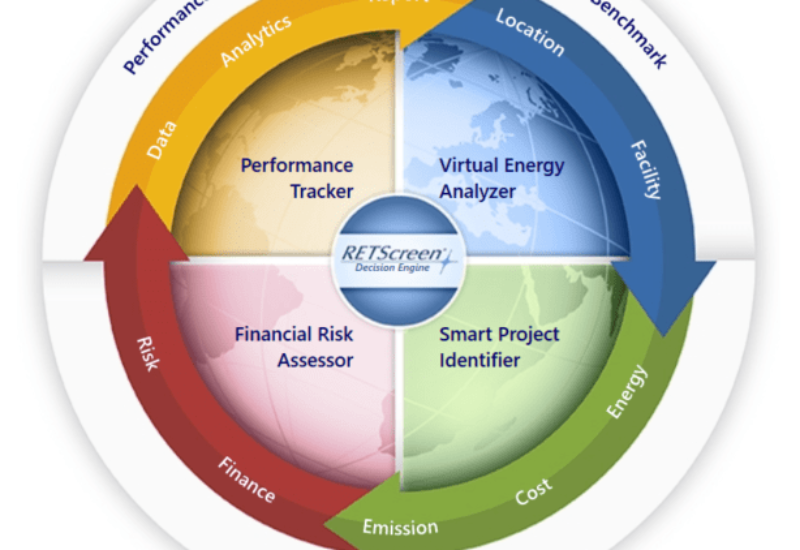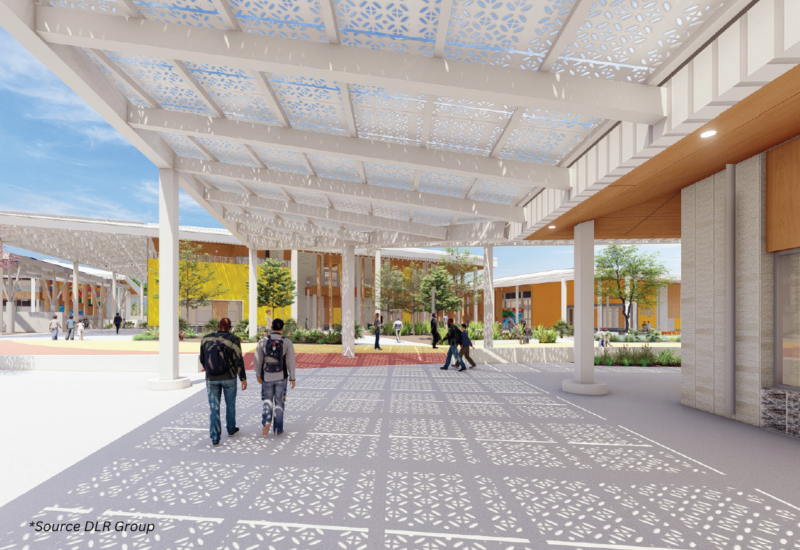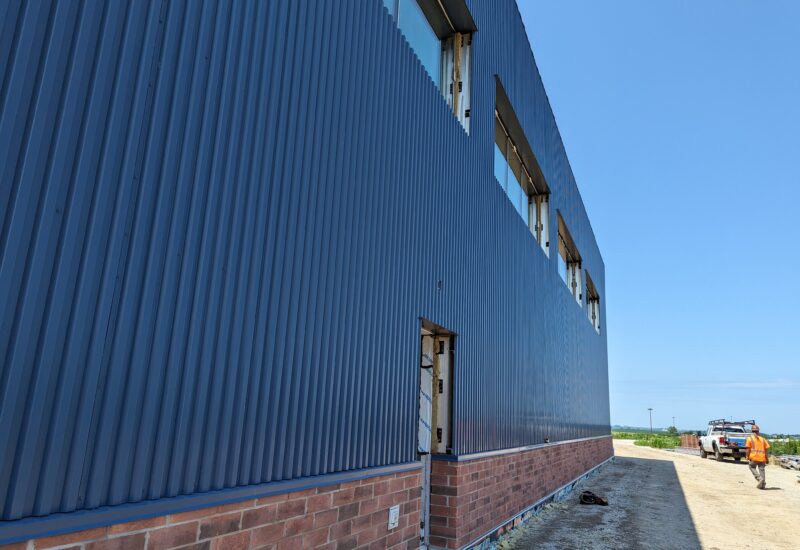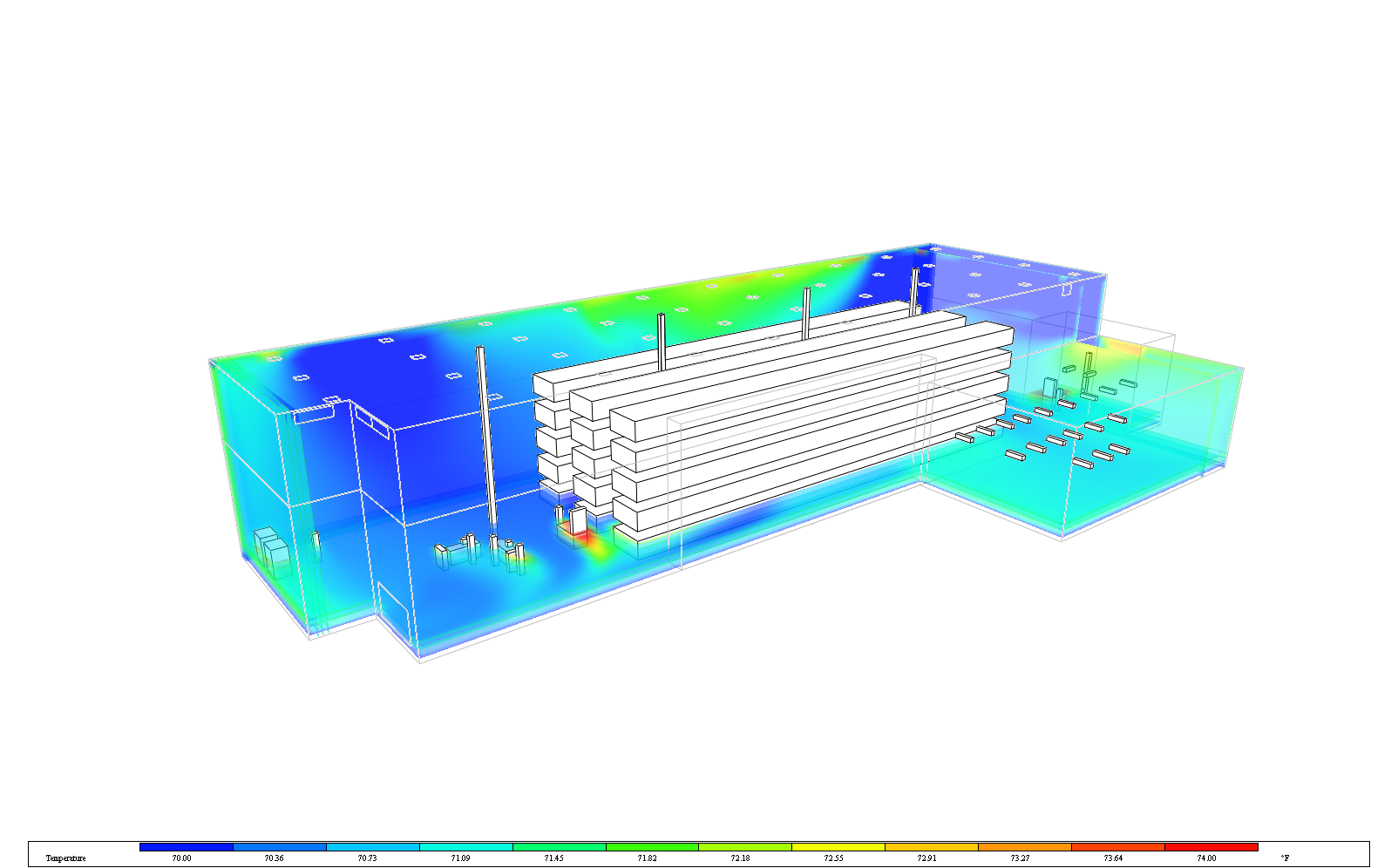Wondering if you need all those fans and air handling units to keep occupants comfortable and mission-critical goods and equipment safe in your space? Using Autodesk CFD, we can visualize conditions and occupant comfort in a space. By simulating building envelope design, HVAC operation, and specialized indoor equipment loads we can predict temperature, velocity, and humidity in a space. By further implementing occupant data such as clothing and activity levels we can predict occupant comfort.
In a recent CFD Comfort Study of a large warehouse facility, we identified areas through the space that were cool to cold. Rather than just jumping to the conclusion that additional heat needed to be provided to the space, we launched an investigation on other solutions that wouldn’t require design changes. After further analysis of clothing levels (clo), we found that occupants may be cold wearing only a t-shirt and overalls, but with the addition of a long-sleeved shirt and removable vest, occupants would be comfortable through the space.
Pro Tip: Occupant activity and clothing levels have an impact on thermal comfort, make sure to take that into account during the design phase.
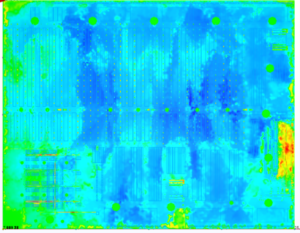


Our building performance simulation practice focuses on providing our clients with consistent, data-driven feedback starting from the early conceptual phases. Interested?

